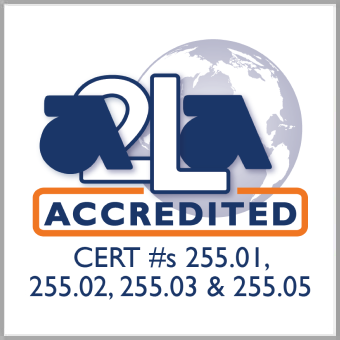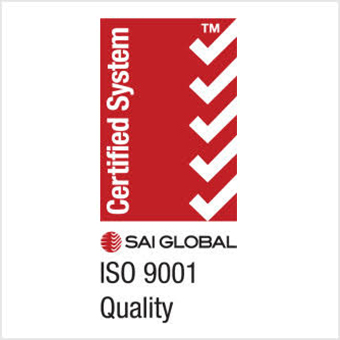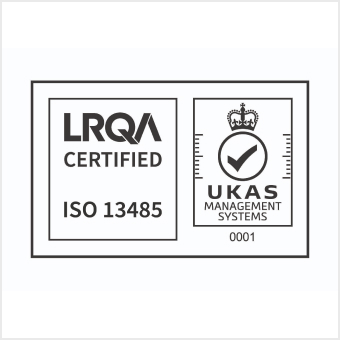Rubber Deterioration
Part 1: Introduction to Rubber Deterioration
- Overview of Rubber Materials
- Types of rubbers (natural, synthetic, elastomers)
- Basic chemical and physical properties of rubber
- Applications of rubber in industry, automotive, aerospace, medical devices, and consumer goods
- Understanding Rubber Deterioration
- What is rubber deterioration?
- Factors contributing to rubber deterioration: environmental, chemical, mechanical
- The impact of deterioration on rubber’s performance (loss of elasticity, hardness, tensile strength, flexibility)
- The importance of rubber deterioration testing in product life cycle management
- Objectives of Rubber Deterioration Testing
- Predicting the lifespan of rubber products
- Ensuring safety and reliability in critical applications (e.g., seals, gaskets, hoses)
- Complying with regulatory and industry standards
- Reducing failures and enhancing product quality
Part 2: Key Methods of Rubber Deterioration Testing
- Accelerated Aging Tests
- Purpose of accelerated aging tests in rubber deterioration
- Common methods: high-temperature testing, UV exposure, ozone exposure
- How accelerated aging simulates long-term real-world conditions
- Equipment used in accelerated aging tests (e.g., ovens, UV chambers, ozone test chambers)
- Ozone Aging Test (ASTM D1149)
- Principle of ozone exposure testing
- Effect of ozone on rubber materials: cracking and degradation
- Test setup and conditions (ozone concentration, temperature, test duration)
- Key standards for ozone testing (ASTM D1149, ISO 1431-1)
- Interpreting test results and the relationship between ozone exposure and rubber degradation
- UV Aging Test
- The role of UV radiation in rubber deterioration
- Types of UV exposure tests: Xenon arc, UVB exposure, and artificial sunlight
- How UV light accelerates rubber aging by breaking down chemical bonds
- Relevant testing standards: ASTM G154, ASTM D4459, ISO 4892-2
- Real-world applications: rubber products exposed to sunlight (e.g., automotive parts, outdoor equipment)
- Heat Aging Test
- Effects of heat on rubber properties: hardening, embrittlement, or softening
- Importance of temperature control in aging tests
- Standard procedures for heat aging (ASTM D573, ISO 188)
- How to interpret test results (changes in hardness, tensile strength, elongation)
- Long-term heat exposure in automotive, aerospace, and industrial applications
- Chemical Resistance Testing
- Rubber exposure to oils, fuels, solvents, and other chemicals
- Impact of chemical exposure on rubber properties (swelling, weight change, volume change)
- Key test methods: ASTM D471, ISO 1817, ASTM D543
- Real-world applications: fuel hoses, seals, gaskets in automotive and industrial systems
- Oxygen and Oxidation Aging
- The role of oxygen and oxidative degradation in rubber materials
- Test methods: ASTM D2228, ISO 1827
- Mechanism of oxidation and its effect on rubber’s properties
- Testing parameters: pressure, temperature, and oxygen concentration
Part 3: Industry Standards for Rubber Deterioration Testing
- Overview of Testing Standards
- Importance of industry standards in rubber testing
- Global standards for rubber deterioration testing (ASTM, ISO, SAE, JIS)
- The role of regulatory bodies and standards organizations in establishing testing protocols
- How standards guide the automotive, industrial, medical, and consumer rubber industries
- ASTM Standards for Rubber Deterioration Testing
- Detailed exploration of ASTM standards: ASTM D573, ASTM D1149, ASTM D471, ASTM D543
- Differences between standard tests: aging, chemical resistance, and mechanical properties
- Case studies of how ASTM standards are applied in rubber testing
- ISO Standards for Rubber Testing
- Overview of relevant ISO standards: ISO 188, ISO 1431, ISO 1817
- The global applicability of ISO standards in rubber testing
- Integration of ISO standards with local regulatory requirements (e.g., CE, UL)
- SAE and JIS Standards
- Specific rubber deterioration tests for automotive applications (SAE J2027, SAE J2044)
- Japanese Industrial Standards (JIS) for rubber testing (JIS K6258)
- The international harmonization of testing standards for rubber products
Part 4: The Science Behind Rubber Deterioration
- Chemical and Physical Changes During Rubber Aging
- The role of chemical bonds and molecular structure in rubber’s aging process
- How environmental factors like UV light, ozone, heat, and chemicals break down rubber
- The impact of crosslinking and polymer degradation
- Understanding the mechanical failure modes in aging rubber (cracking, brittleness, softening)
- Polymerization and Crosslinking in Rubber Materials
- Basics of rubber vulcanization and the role of crosslinking in rubber properties
- How aging affects the rubber’s crosslinking density
- Differences between thermoplastic elastomers and thermoset rubbers in terms of aging
- Environmental Factors Influencing Rubber Deterioration
- The effect of temperature, humidity, and ozone on rubber’s long-term stability
- UV degradation and how it impacts different types of rubber (natural rubber vs. synthetic rubbers)
- The role of atmospheric conditions in rubber’s performance in automotive, industrial, and consumer products
- Mechanisms of Rubber Deterioration
- Oxidation, hydrolysis, photodegradation, and mechanical wear
- The role of antioxidants, stabilizers, and plasticizers in slowing down deterioration
- Mechanisms of failure in rubber: cracking, loss of flexibility, and decreased tensile strength
Part 5: Applications and Case Studies
- Rubber Deterioration in Automotive Applications
- Seals, gaskets, hoses, and belts in automotive systems
- Real-world exposure to fuel, oils, UV light, and heat
- How testing ensures that automotive rubber parts meet safety and performance standards
- Case studies: rubber deterioration in automotive fuel systems, weather stripping, and tires
- Rubber Deterioration in Aerospace and Military Applications
- Rubber components in aircraft engines, fuel systems, and seals
- The high-performance demands of aerospace rubber parts
- Testing protocols for extreme conditions (high altitudes, high temperatures, and chemical exposure)
- Case studies: rubber seals in spacecraft and high-performance military equipment
- Medical Device Rubber Testing
- The role of rubber in medical devices: stoppers, seals, and tubing
- Deterioration concerns in medical applications: biocompatibility and sterilization
- How rubber materials are tested for aging and chemical resistance in the medical field
- Case studies: rubber used in drug delivery systems, surgical instruments, and diagnostics
- Rubber Deterioration in Industrial and Consumer Products
- Rubber in industrial machinery, seals, and equipment
- The challenges of rubber in outdoor applications (weather-resistant rubber)
- Case studies: rubber used in consumer goods (toys, footwear, weather seals)
Part 6: Advanced Topics in Rubber Deterioration Testing
- Innovations in Rubber Testing Equipment
- New methods of accelerated aging testing (e.g., real-time monitoring of degradation)
- The use of artificial intelligence and data analytics in rubber testing
- Advances in testing for rubber used in extreme environments (deep-sea, space, high-heat applications)
- Predictive Modeling for Rubber Durability
- Mathematical modeling and simulations in rubber deterioration testing
- How predictive models can forecast rubber performance based on environmental conditions
- The role of machine learning in improving rubber durability prediction
- Sustainability and Rubber Testing
- The growing importance of sustainable rubber materials
- Testing rubber materials for eco-friendliness: biodegradability, recyclability, and non-toxicity
- The role of sustainability standards in rubber testing and material innovation
Part 7: Conclusion
- Summary of Key Testing Methods
- Recap of the key rubber deterioration testing methods and standards
- Best practices for ensuring rubber product longevity
- The Future of Rubber Deterioration Testing
- Emerging trends in rubber testing and material science
- How innovations in testing are driving better, more reliable rubber products
Conclusion
Rubber Deterioration Testing is essential for ensuring that rubber products maintain their performance, safety, and durability throughout their life cycle. By employing various testing methods such as accelerated aging, ozone exposure, UV degradation, and chemical resistance testing, manufacturers can predict the behavior of rubber in real-world conditions. The application of global standards, like ASTM, ISO, and SAE, ensures that rubber materials meet rigorous performance criteria for industries such as automotive, aerospace, medical devices, and consumer goods.



